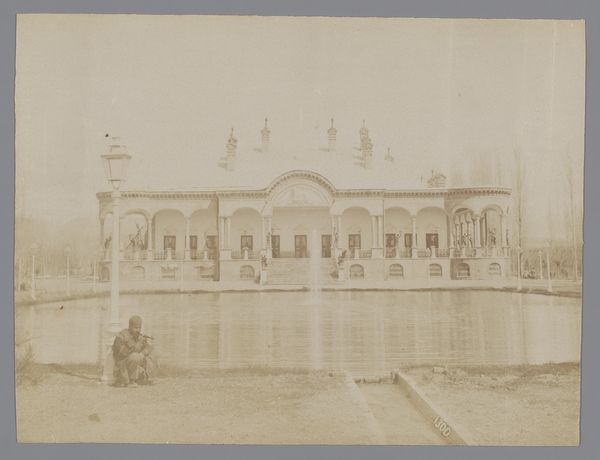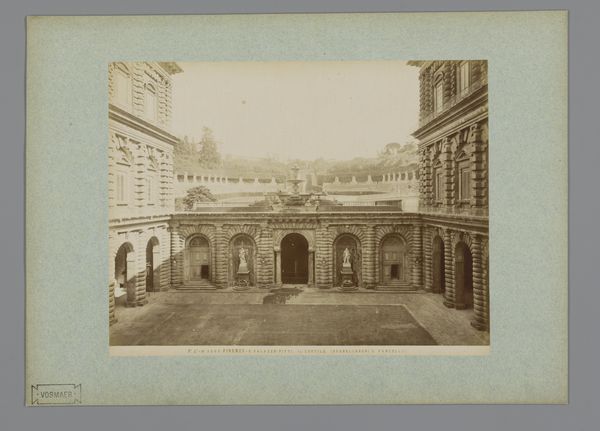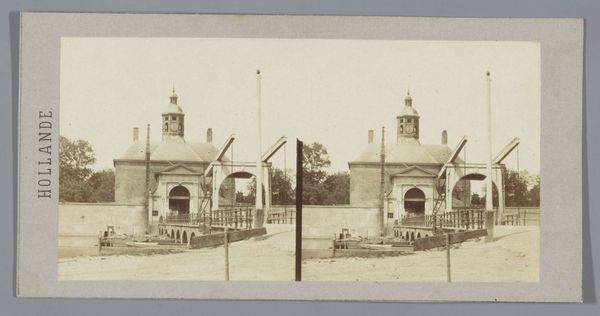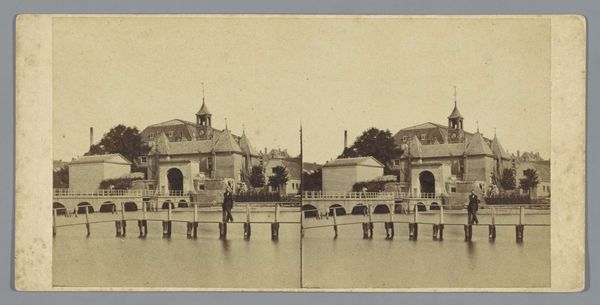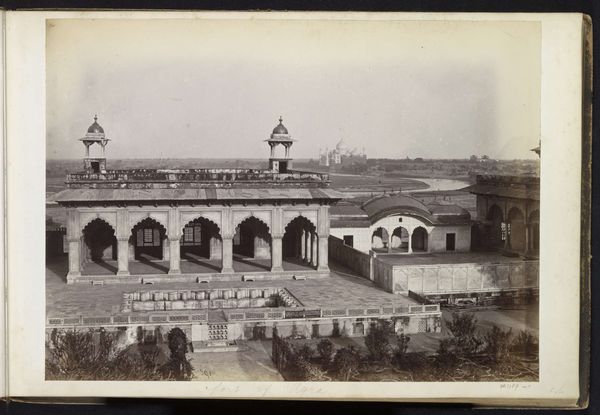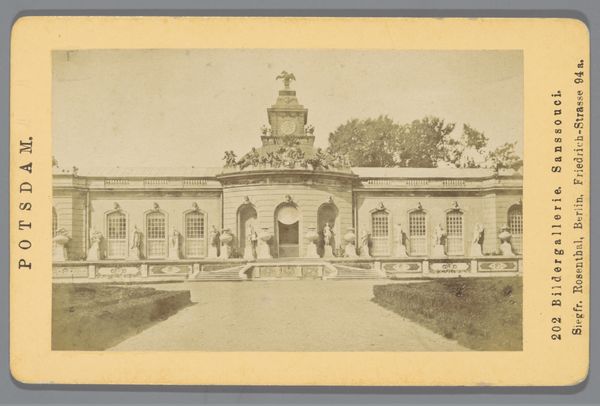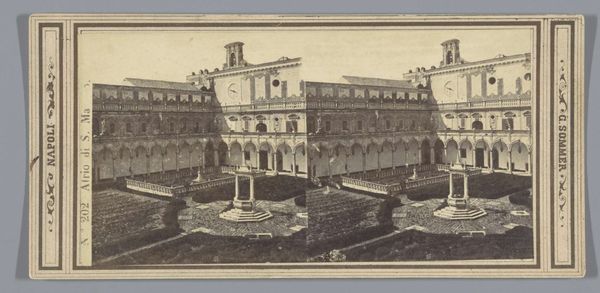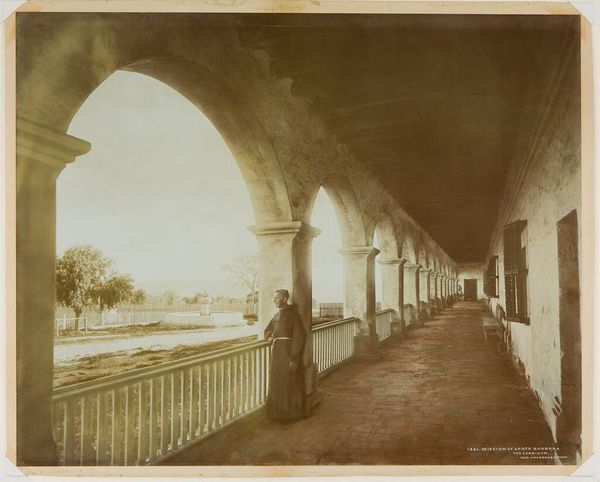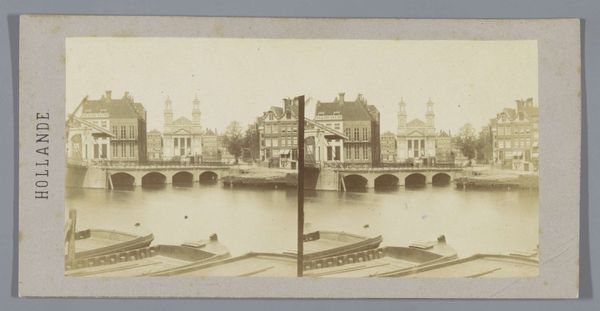
Dimensions: height 84 mm, width 175 mm
Copyright: Rijks Museum: Open Domain
Curator: Welcome. We’re standing before Pieter Oosterhuis's "Muiderpoort te Amsterdam," a photograph, specifically an albumen print, dating from between 1860 and 1870. Editor: It's so still. The sepia tones lend it a timeless quality, and the reflection in the water makes the gate look like it's floating. The textures are so muted, the stone almost looks like fabric. Curator: Indeed, that stillness resonates with Romanticism's focus on atmosphere and feeling. What’s interesting is how Oosterhuis captures this gateway at a time of immense change in Amsterdam. This isn't just a photograph; it’s a document of the city's infrastructure before modernization reshaped it. It was a transitional time. Editor: Thinking about it as an albumen print makes me consider the labor involved. This was a complex chemical process. Each print required coating paper with egg whites, sensitizing it to light… the degree of control available over the final image speaks volumes about Oosterhuis’ technical skill. What was the intent of the photograph? Curator: Beyond documentary, Oosterhuis likely intended it to circulate as a picturesque view. The Muiderpoort, while functional, carried symbolic weight. Gateways historically signified power, control, even exclusion, especially for marginalized people outside city walls. That the wall has almost no defense function and is primarily used as a decorative architectural symbol demonstrates an increasing investment in a bourgeoise ideal for the city’s future. Editor: Absolutely, and that decorative focus extends to the bridge with its repeated arches and reflections. You can really see the labour and resources involved in the materials; even the processing needed resources. And it became part of a system of exchange, something someone purchased, possessed. What about that tiny figure on the bridge? Curator: The figure is key, humanizing the structure and giving a sense of scale and accessibility, despite what gates traditionally represent. This tension is characteristic of the 19th century as cities navigated progress and tradition. Editor: A great reminder to consider the hands involved in not just the art, but also its impact on societal evolution, capturing these in-betweens, in this photograph, rendered through the processes, chemical and social, of its making. Curator: Yes, it prompts us to examine not only what the photograph shows but how it reflects broader shifts in urban life.
Comments
No comments
Be the first to comment and join the conversation on the ultimate creative platform.

